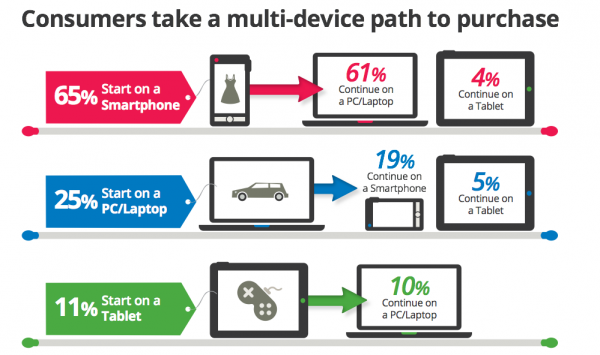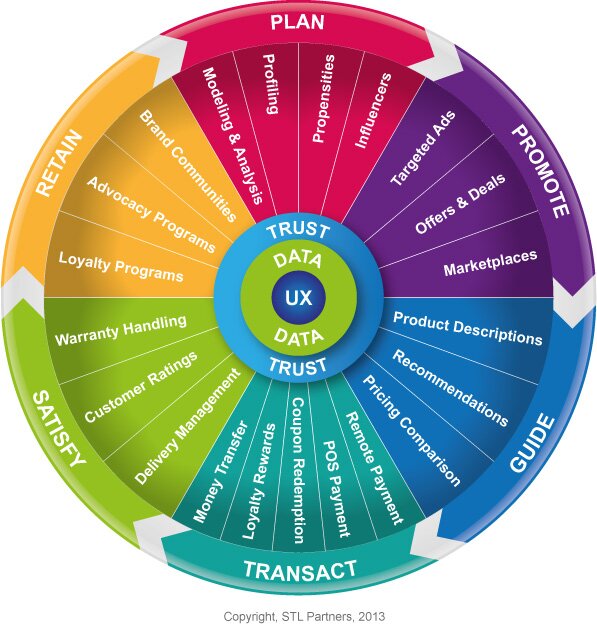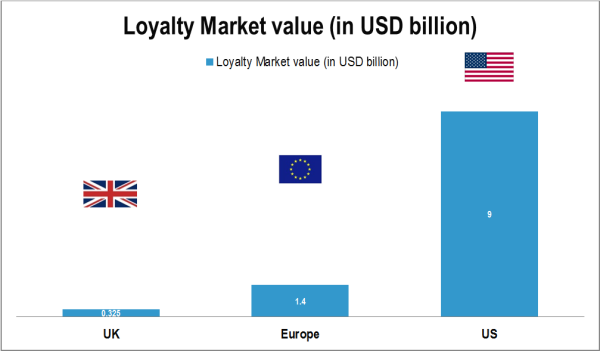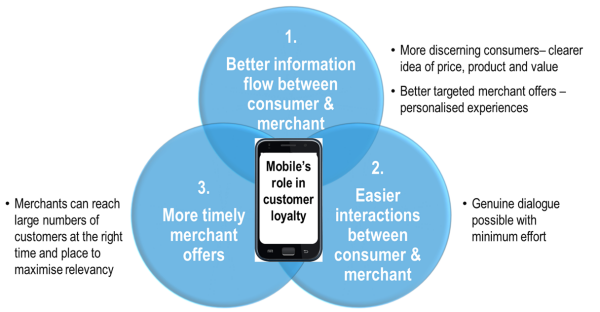| Summary: The advent of smartphones and tablets is disrupting the $10Bn+ loyalty market by opening up new ways for brands and retailers to engage with their customers in a highly interactive fashion. This briefing analyses that market, why mobile is a compelling medium in it, key mobile app types, and leading edge strategies used by online players and traditional retailers. It concludes by outlining the strategies telcos need to employ to add value and exploit their assets and capabilities to play a major role in the value chain. (July 2013, Executive Briefing Service, Dealing with Disruption Stream.) |
|
Below is an extract from this 44 page Telco 2.0 Report that can be downloaded in full in PDF format by members of the Telco 2.0 Executive Briefing service and the Dealing with Disruption Stream here. Non-members can subscribe here, buy a Single User license for this report online here for £795 (+VAT for UK buyers), or for multi-user licenses or other enquiries, please email / call +44 (0) 207 247 5003.
To share this article easily, please click:
STL Partners defines Digital Commerce 2.0 as the use of new digital and mobile technology to bring buyers and sellers together more efficiently and effectively. Fast-growing usage of mobile and social networking is opening up direct communication channels for bricks-and-mortar companies that could strengthen relationships with customers and, as a result, improve both sales performance and operating efficiency.
With consumers permanently connected via mobile and social networking, leveraging the collective influence of loyal customers has never been more important. Now, more than ever, retailers are looking to facilitate information access and sharing – such as comparison tools, vouchers, personalised offers, and loyalty points – with their customers. An engaged and loyal customer base is likely to spend more and act as a ‘brand ambassador’ community for the company.
This executive briefing builds on STL Partners’ previously-published reports, Digital Commerce: Show me the Money and The Mobile Commerce Land-grab, which map out a comprehensive mobile commerce strategy and systematic approach to deploy services. In this briefing, STL Partners focuses on a specific aspect of our Digital Commerce “Wheel of Commerce”: Mobile loyalty. It explores opportunities for mobile operators to establish themselves as strong strategic position in the mobile loyalty space. In this briefing, we:
In the mid-1990s, e-commerce platforms began disrupting the retail sector by promoting a new consumption model that gave consumers greater control and access to a wider choice of products, price comparison tools, and customer feedback information. Online players thus not only enjoyed cost advantages, but also customer experience advantages over high-street retailers. Bricks-and-mortar players had to re-examine and re-evaluate their relationships with customers.
While mobile technology continues to create challenges for high-street players by enabling, for example, ‘show-rooming’ in which customers browse products in the store while simultaneously finding the best price for the same product online, mobile also provides the tools for a ‘high-street fight-back’. By communicating with individual customers through the mobile channel, brands and shops have the ability to provide relevant personalised messages and offers that promote brand loyalty, as well as directly affecting purchasing behaviour.
The impact of mobile technologies on purchasing decisions is, therefore, increasing rapidly. As well as using their handsets to buy more, consumers are also using mobile phones as a key tool for research and to make buying decisions.

Source: Google
We define loyalty as covering three principle activities within the ‘Retain’ section of STL Partners’ Digital Commerce ‘Wheel of Commerce (see Figure 2) – a schematic representation of all the key elements of a holistic digital commerce offering:
Things are complicated, of course, by the fact that the other sections of the ‘Wheel of Commerce’ are used in loyalty activities - customer profiling (in the plan section), offers and deals (promote), recommendations (guide), coupon redemptions and loyalty rewards (transact), and customer ratings (satisfy) are all potentially part of an effective loyalty or advocacy program.

Source: STL Partners
For the reasons outlined above, it is not easy to size loyalty as a distinct market separate from other marketing and payment activities associated with digital commerce.
As one benchmark, the AIMIA UK coalition estimates that £1 out of every £15 spent by UK consumers was eligible for a loyalty reward - or 6.7% of their spending. According to Payment Council, the UK spent around £312 billion in retail in 2012, so using the AIMIA UK coalition’s 6.7% estimate, this equates to a total retail value of £21 billion being eligible for loyalty schemes. Based on the major UK loyalty schemes (Tesco, Nectar), for each pound spent in retail, customers are rewarded with a penny voucher (1:100 ratio). Therefore, the estimated UK loyalty spending by retailers in terms of rewards issued (as opposed to redeemed) is £210 million, i.e. US$325 million.
The UK loyalty marketplace is mature compared to other European countries. According to Global Vision, the UK represents 15 percent of the EU25 Purchasing Power Parity (PPP), suggesting a potential USD1.4 billion European loyalty market value.
Moreover Colloquy estimates that the perceived value of points sold to third-parties in 2011 in the US was worth $9 billion.

Some estimates of the value of the loyalty market are much higher. For example, Colloquy estimated the 2011 U.S. loyalty market at USD 48bn, while AIMIA has predicted that the global loyalty market will be worth USD 100bn in 2015. Those higher estimates refer to the broader loyalty market, which notably includes the transport and hospitality industries (with their popular ‘Airmiles’ type schemes). In this study, STL Partners is only considering the retail industry. Also some industry estimates include valuations relating to consumers' perceived value of their earned and collected points, as opposed to the effective cost to the merchant, which we have used to give a more relevant comparison for players considering the business case in more depth.
Mobile technologies open up new and creative ways for brands and retailers to interact with their target audiences. They can use the mobile channel to exchange value with their target audiences in order to generate leads, as well as on-going dialogue, which can be used, for example, to learn more about customers or to test new product and service concepts. An increasing proportion of retailers are integrating innovative mobile and digital technology into their marketing and loyalty strategy as a mean to differentiate and to fulfil customers’ needs for more personalisation, interactivity, and proximity.
The relationship that retailers maintain with their customers is being reinvented. The combination of the Internet, online commerce platforms and advanced analytics tools is enabling new forms of interaction with online consumers.
Consumers are now expecting more personalised shopping experiences. Amazon has, for example, strengthened its customer relationships by offering support across the whole customer life cycle – recommendations, purchase decision, delivery, after-sale service and customer retention.
As shoppers grow more fluent in browsing and comparing prices via smartphone, pure ‘bricks-and-mortar’ retail channels are struggling to keep pace with discount online merchants that contribute to the rise of “showrooming”, in which customers browse for products in stores and then buy them online from Amazon and other retailers for less. Such is Amazon’s confidence that it can offer prices unmatched by stores that its ‘price checker’ application is even encouraging consumers to visit bricks-and-mortar retailers to trial products before ordering them online from Amazon.
By placing the Internet in the hands of consumers all the time, mobile devices are enhancing consumers’ information and control over their shopping experience. Retailers of any kind must respond by offering competitively-priced and personalised offerings.
As more consumer attention and transactions move on to mobile, it is no surprise that retailers and brands see this as an increasingly important way to engage with customers. Mobile advertising, heavily hyped between 2005 and 2007, is finally beginning to attract material budgets. However, there has been a shift away from traditional display advertising (common on the Internet) towards more interactive forms of engagement that take advantage of mobile’s unique characteristics of immediacy and ability to influence consumers while they are out and about combined with an effective ‘return path’ – whether that be via SMS or WAP. Moreover, the ubiquity and intrinsic characteristics of mobile phones have enabled and facilitate “on-the-go” dialogue and content sharing activities.
Retailers are now encouraging loyal customers to populate social media channels with engaging content: (Micro)-blogging sites, photo galleries, forums, polls, and videos are all examples of social communication channels that are being used by merchants and brands to interact with existing customers. It is no surprise that the battleground for Internet players that offer marketing and advertising support, such as Facebook, Google and Microsoft (Online Services division), is shifting rapidly to mobile.
As the level of ‘marketing noise’ for consumers rises remorselessly on the Internet, merchants increasingly need to offer appropriate relevant messages at the right time. For example, product offers need to be made while consumers are in-store (and before they reach the point of sale), not while they are at home opening mail or, worse, overseas in a different time zone. Mobile does not just provide reach but, with the addition of location and presence, also allows merchants to interact with consumers efficiently at the right place and the right time.

Source: STL Partners/Telco 2.0
To read the note in full, including the following additional analysis...
...and the following figures...
...Members of the Telco 2.0 Executive Briefing Subscription Service and the Dealing with Disruption Stream can download the full 44 page report in PDF format here. Non-Members, please subscribe here, buy a Single User license for this report online here for £795 (+VAT for UK buyers), or for multi-user licenses or other enquiries, please email / call +44 (0) 207 247 5003.
Technologies and industry terms referenced: